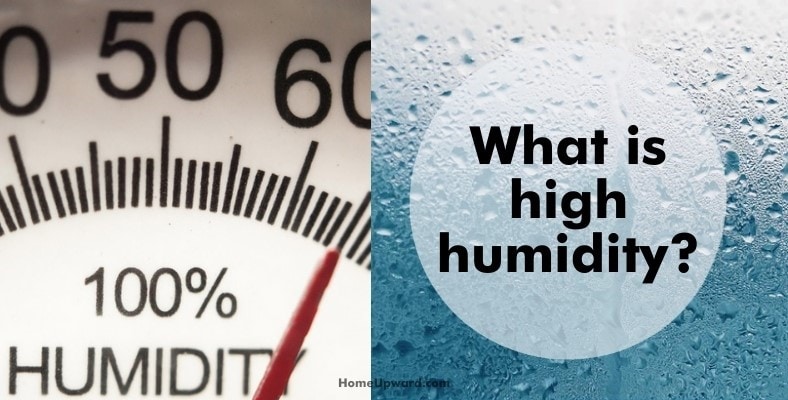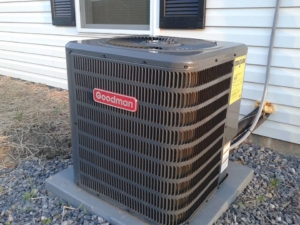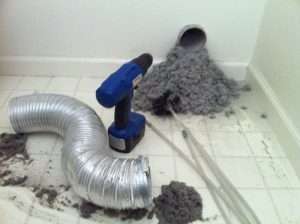What Is Considered High Humidity? Understanding
the Impact on Comfort and Health

Humidity, the measure of moisture in the air, plays a vital role in our daily lives, affecting how we feel and interact with our surroundings. While we often hear about high humidity levels, what exactly does it mean, and how does it impact our well-being? In this blog, we’ll delve into the world of humidity, its effects on comfort and health, and ways to manage it effectively.
Understanding Humidity
Humidity, as described, is a fundamental aspect of atmospheric conditions that can have a significant impact on various aspects of our daily lives. Let’s delve deeper into each of the measurement metrics and the concept of the dew point to gain a better understanding of how humidity affects our environment and well-being.
1. Absolute Humidity:
Absolute humidity refers to the actual amount of water vapor present in the air, expressed in grams of water vapor per cubic meter of air (g/m³). It provides a precise measurement of the moisture content in the atmosphere. While absolute humidity is a crucial parameter in meteorology and environmental studies, it doesn’t directly indicate how saturated the air is or its effect on human comfort. For that, we need to consider relative humidity.
2. Relative Humidity:
Relative humidity (RH) is the more commonly used metric to assess the moisture level in the air. It represents the percentage of water vapor present in the air relative to the maximum amount of water vapor the air can hold at a specific temperature. As the temperature changes, the air’s capacity to hold moisture also varies.
When the relative humidity is 100%, the air is considered saturated, meaning it contains the maximum amount of water vapor possible for that temperature. If the relative humidity is 50%, the air holds only half of the water vapor it could potentially hold at that temperature. Thus, relative humidity offers valuable insights into how close the air is to reaching its saturation point.
High relative humidity can lead to discomfort because it reduces the evaporation of moisture from our skin, hindering the body’s ability to cool down through perspiration. This phenomenon can make hot days feel even more unbearable.
3. Dew Point:
The dew point is an essential concept related to humidity and is directly linked to relative humidity. It represents the temperature at which air becomes saturated, and condensation occurs, leading to the formation of dew, fog, or even clouds.
Understanding the dew point is crucial for predicting the likelihood of condensation and subsequent moisture-related issues. When the air temperature reaches the dew point, the air can no longer hold all the water vapor it contains, and excess moisture starts to condense into liquid water. This can occur on surfaces like windows, walls, and cold objects, leading to the formation of droplets.
During hot and humid days, reaching the dew point can create uncomfortable and sticky conditions. Additionally, if indoor surfaces cool down enough to reach the dew point, condensation can occur, potentially leading to mold growth and other moisture-related problems. By monitoring and managing humidity levels effectively, we can create more comfortable and healthier living environments for ourselves and those around us.
What is considered High Humidity?
The perception of what constitutes high humidity is not a fixed value and can vary significantly based on several factors, including geographical location and individual adaptability. While there are general guidelines to define high humidity, it is essential to consider the specific context and regional conditions to understand its impact on comfort and health.
1. Geographical Location:
Geographical location plays a crucial role in determining what is considered high humidity. Different parts of the world experience varying levels of humidity due to climate patterns, proximity to large bodies of water, and other environmental factors.
Tropical areas, for instance, are known for their naturally high humidity levels. These regions often experience relative humidity well above 60% or even 70%. In such places, people have adapted to living in these conditions, and their bodies may be more accustomed to higher moisture levels. As a result, locals might find humidity levels that outsiders perceive as uncomfortable to be quite bearable.
On the other hand, arid regions, such as deserts, may have low humidity levels as a common feature of their climate. In such areas, even a slight increase in humidity can be noticeable and potentially uncomfortable for residents who are more accustomed to dry conditions.
2. Individual Perception:
Beyond regional differences, individual perception and tolerance for high humidity can also vary. Some people are more sensitive to changes in humidity and may feel discomfort even at relatively moderate levels, while others might not be as bothered until humidity reaches higher thresholds.
Factors such as age, health conditions, and acclimatization can influence how individuals perceive and react to humidity. Older adults, children, and individuals with respiratory conditions may be more susceptible to the adverse effects of high humidity, even at levels that others might find tolerable.
3. Cultural Adaptations:
Cultural adaptations also play a role in how societies perceive and cope with humidity. Some cultures have developed architectural and lifestyle practices to mitigate the effects of high humidity. Traditional building designs, such as elevated houses with good ventilation, have been used in humid regions to provide relief from excessive moisture.
The threshold for what is considered high humidity is not a fixed value but rather a dynamic concept influenced by geographical location, individual differences, and cultural adaptations. Relative humidity levels above 60% are generally recognized as high and can impact our comfort and health. However, certain regions with naturally high humidity may have higher tolerances, while arid regions may be more sensitive to even slightly elevated humidity.
The Effects of High Humidity on Health
High humidity can have various effects on our health. One major concern is its impact on the respiratory system, as it can exacerbate breathing difficulties for individuals with asthma or allergies. High humidity contributes to heat-related illnesses, as it hinders efficient cooling through sweating. Prolonged exposure to high humidity, combined with high temperatures, can lead to dehydration and heat exhaustion.
Elevated humidity levels create an ideal environment for the growth of mold, mildew, and dust mites. These allergens can trigger respiratory issues and worsen existing conditions, posing a threat to both our comfort and health.
High Humidity vs. Heat Index
Differentiating between high humidity and high temperatures is crucial for understanding the real impact of weather conditions on our comfort and well-being. The heat index, also known as the “apparent temperature,” provides a more accurate representation of how the combination of temperature and humidity feels to the human body.
1. Understanding the Heat Index:
The heat index takes into account both air temperature and relative humidity to calculate how hot it actually feels. When humidity levels are high, the body’s ability to cool down through evaporation of sweat diminishes. As a result, the perceived temperature can be significantly higher than the actual air temperature. The heat index is particularly important during hot and humid weather when high humidity exacerbates the discomfort.
2. Importance of the Heat Index:
Knowing the heat index is vital for assessing the risk of heat-related illnesses and taking appropriate precautions. While high temperatures alone can be challenging, the added impact of humidity can make hot days feel even more oppressive and potentially dangerous.
Heat-related illnesses, such as heat exhaustion and heatstroke, occur when the body’s cooling mechanisms become overwhelmed, leading to a rise in core body temperature. High humidity inhibits the body’s ability to cool down through perspiration, increasing the risk of dehydration and heat-related health issues.
3. Effects of High Humidity on Perceived Temperature:
Imagine a day with an air temperature of 90°F (32°C) and a relative humidity of 80%. The heat index, in this case, would be significantly higher than 90°F due to the added discomfort caused by the high humidity. It might feel like 100°F (38°C) or even more, making the day feel exceptionally hot and unbearable.
On the other hand, in dry desert regions with low humidity, a temperature of 90°F might feel much more tolerable, as the body can efficiently cool itself through evaporation.
4. Impact on Outdoor Activities:
The heat index is especially valuable for individuals engaging in outdoor activities, sports, or labor during hot and humid conditions. It helps in making informed decisions about the timing and duration of outdoor activities and encourages taking adequate breaks, seeking shade, and staying hydrated to prevent heat-related illnesses.
5. Heat Index and Vulnerable Populations:
Certain populations, such as the elderly, children, and individuals with pre-existing health conditions, are more susceptible to heat-related illnesses. For them, the heat index becomes even more critical as it guides in taking extra precautions and avoiding prolonged exposure to high temperatures and humidity.
High Humidity and Your Home
Indoor humidity levels are crucial for maintaining a healthy living environment. High humidity in our homes can lead to problems like condensation on windows, musty odors, and even structural damage over time. Proper ventilation, such as using exhaust fans in bathrooms and kitchens, is essential to reduce excess moisture.
Investing in a dehumidifier can also help regulate indoor humidity levels and prevent the growth of mold and mildew. Additionally, ensuring your air conditioning system is in good working condition aids in controlling humidity, as AC units naturally dehumidify the air as they cool it.
Coping with High Humidity
During humid days, when the air feels heavy and stifling, implementing lifestyle tips can significantly enhance comfort and well-being. By adopting these practices, we can better manage our body temperature and minimize the discomfort associated with high humidity.
1. Clothing Choice:
Choosing the right clothing should be considered for staying comfortable in humid weather. Opt for lightweight and breathable fabrics made from natural fibers like cotton or linen. These materials allow air to flow freely, facilitating evaporation of sweat and helping to regulate body temperature. Loose-fitting clothing also helps improve air circulation around the skin, reducing the feeling of stickiness and heat.
2. Taking Cool Showers:
Cool showers can be incredibly refreshing during humid days. They help lower body temperature and provide relief from the heat. Additionally, the water from the shower can evaporate from the skin, creating a cooling effect. If a cool shower isn’t possible, consider using a damp washcloth on the forehead and neck to alleviate discomfort.
3. Staying Hydrated:
High humidity can cause us to sweat more, leading to increased fluid loss. It is crucial to stay well-hydrated by drinking plenty of water throughout the day. Water not only helps regulate body temperature but also replenishes lost fluids. Avoid excessive consumption of caffeinated or sugary beverages, as they can contribute to dehydration.
4. Utilizing Ceiling Fans:
Indoor comfort is equally important during humid days. Ceiling fans are an excellent way to promote air circulation in rooms, providing a gentle breeze that helps create a cooling effect. The moving air can make the indoor environment feel more comfortable, even without lowering the temperature. When using air conditioning, combining it with ceiling fans allows for more efficient cooling, as the fans help distribute the cooled air.
5. Using Dehumidifiers:
In areas with persistently high humidity, using a dehumidifier can make a significant difference in indoor comfort. Dehumidifiers work by removing excess moisture from the air, reducing humidity levels and preventing the growth of mold and mildew. They are particularly useful in basements, bathrooms, and other spaces prone to high humidity. By maintaining a comfortable level of humidity indoors, you can create a more pleasant living environment and reduce the risk of moisture-related issues.
6. Creating Shaded Outdoor Spaces:
If spending time outdoors during humid days, seek out shaded areas to protect yourself from direct sunlight. Shade can significantly lower the ambient temperature and provide some relief from the heat. Consider sitting under trees, using umbrellas, or creating shade with canopies or awnings.
High Humidity and the Environment
High humidity is not only a concern for individual comfort and health but also for the environment. Climate change affects humidity levels, and the rising global temperatures may result in increased evaporation of water, leading to more humid conditions in certain regions.
Humidity also influences ecosystems and agriculture. Some plant species thrive in high humidity, while others may struggle. Changes in humidity levels can impact water availability for plants, affecting crop yields and the overall balance of ecosystems.
Humidity and Personal Wellness
To track and monitor humidity levels at home, you can use hygrometers, which are readily available in stores or online. Being aware of humidity levels allows you to take appropriate measures to stay comfortable and healthy.
If you notice signs of discomfort, such as difficulty breathing, persistent allergies, or mold growth, it’s essential to seek professional advice. A healthcare professional can help determine if high humidity is contributing to health issues and recommend appropriate solutions.
Frequently Asked Questions
FAQs About What Is Considered High Humidity:
1. Q: What is high humidity?
A: High humidity refers to elevated levels of moisture or water vapor in the air, making it feel sticky and uncomfortable.
2. Q: What is the threshold for high humidity?
A: Generally, relative humidity levels above 60% are considered high and can significantly impact comfort and health.
3. Q: Does the definition of high humidity vary by location?
A: Yes, the perception of high humidity can vary depending on geographical location and climate conditions.
4. Q: Are there regions with naturally high humidity levels?
A: Yes, tropical areas and coastal regions tend to experience higher humidity levels due to their proximity to large bodies of water.
5. Q: Can high humidity affect our health?
A: Yes, high humidity can contribute to heat-related illnesses, worsen respiratory conditions, and promote the growth of allergens like mold and dust mites.
6. Q: How does high humidity impact comfort?
A: High humidity reduces the body’s ability to cool down through perspiration, leading to a feeling of stickiness and discomfort.
7. Q: What is the “heat index”?
A: The heat index, also known as the “apparent temperature,” factors in both temperature and humidity to determine how hot it feels to the human body.
8. Q: Why does high humidity make hot days feel even more oppressive?
A: High humidity inhibits the evaporation of sweat from our skin, making it challenging for our bodies to cool down effectively.
9. Q: What are some signs of discomfort due to high humidity?
A: Signs of discomfort may include feeling excessively sweaty, experiencing difficulty breathing, and a general feeling of lethargy.
10. Q: How can I manage high humidity indoors?
A: Using ceiling fans for better air circulation and investing in a dehumidifier can help regulate indoor humidity levels.
11. Q: What type of clothing is best for humid weather?
A: Lightweight, breathable clothing made from natural fibers like cotton or linen is ideal for managing body temperature in humid conditions.
12. Q: Are there regions that may find slightly elevated humidity uncomfortable?
A: Yes, arid regions with low humidity levels as their norm may find even a slight increase in humidity uncomfortable.
13. Q: Can high humidity affect electronic devices?
A: Yes, high humidity can lead to condensation inside electronic devices, potentially causing damage and malfunctions.
14. Q: Can high humidity impact sleep quality?
A: Yes, high humidity can make it harder to sleep comfortably, leading to restlessness and disrupted sleep patterns.
15. Q: How can I measure humidity levels at home?
A: You can use a hygrometer, a device that measures relative humidity, to monitor indoor humidity levels and take necessary actions to control them.
Conclusion
Understanding high humidity and its effects is essential for maintaining our comfort, health, and well-being. By being mindful of indoor and outdoor humidity levels, we can take necessary steps to manage and control them effectively. Whether it’s optimizing ventilation, investing in a dehumidifier, or simply staying informed about weather conditions, a proactive approach ensures a more comfortable and healthier living environment for ourselves and our communities. Let’s embrace the power of knowledge and create a better quality of life amidst varying humidity levels.







